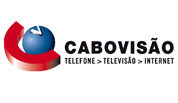A former executive at Bell Canada and Rogers Communications has been named interim chairman of Canada’s telecommunications regulator.
Current Canadian Radio-television Telecommunications Commission (CRTC) vice-chairman Leonard Katz was appointed interim chairman Wednesday, following the departure of Konrad von Finckenstein.
Katz is not expected to hold the position for long. Political insiders point to Conservative government favorite Tom Pentefountas, who has spent months lobbying for the CRTC top spot. In July, Pentefountas asked a consumer group, “what is so undemocratic about allowing a few companies to control the Internet?”
Katz is yet another regulator who has spent most of his professional life working for the companies he is now expected to oversee. Katz held senior posts at both Bell and Rogers, Canada’s largest telecommunications companies, before joining the CRTC in 2005. He has served as its vice-chairman since 2007.
Katz has crossed swords with the Conservative government led by Stephen Harper on more than one occasion, most recently being embroiled in the controversy over Usage Based Billing. An initial decision by the CRTC to adopt much of a plan submitted by Bell that would end unlimited flat rate access to the Internet in Canada was reversed by then-Industry Minister Tony Clement. The government’s decision to overrule the Commission opened the door for ridicule by opposition Liberal and NDP MPs, who questioned the credibility of the CRTC and its authority under Conservative leadership.
Departing chairman Von Finckenstein blamed outdated regulatory policies for much of the controversy at the CRTC. The government agency has been forced to adopt a largely deregulatory stance towards telecommunications, and has regularly been accused of catering to the interests of some of Canada’s largest telecommunications companies.
In the past several years, the CRTC has overseen a telecommunications marketplace that is rapidly consolidating, especially around companies like Bell, Rogers, and Shaw Communications, which have interests in broadcasting, publishing, entertainment, and telecommunications services.
Katz could be replaced as early as this fall, and the controversial Conservative Montreal lawyer Tom Pentefountas remains the favorite pick among political watchers in Ottawa.
But Pentefountas has his enemies. He has been roundly attacked for lacking the necessary experience and credentials to act as a commissioner on the CRTC, much less serve as its chairman, particularly by NDP Heritage Minister Critic Charlie Angus (Timmins-James Bay).
Pentefountas, Angus claimed, told national media five months after being considered for the post of vice-chairman of the CRTC, “he didn’t know anything about the job.”
One unnamed source told Postmedia News Mr. Pentefountas may not grasp the transformational nature of the Internet and its impact on traditional broadcasting and telecommunications companies.
“He’s occasionally comes out of left field,” the source said.
[flv]http://www.phillipdampier.com/video/Charlie Angus on CBC on CRTC 2-10-11.flv[/flv]
CBC-TV aired this exchange last February between NDP Heritage Critic Charlie Angus (Timmins/James Bay), Dean Del Mastro, Parl. Secretary for the Minister of Heritage, and Liberal MP Marc Garneau (Westmount/Ville-Marie) regarding Tom Pentefountas, the challenges at the CRTC, and controversy over a new policy that would allow the reporting of “false news.” (12 minutes)


 Subscribe
Subscribe






